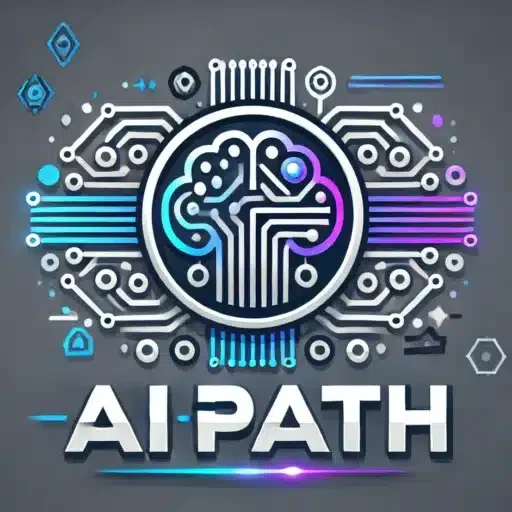The rise of agentic AI promises a new era of autonomous systems capable of transforming enterprise operations. But realizing this potential requires careful planning and execution. Successfully deploying AI agents at scale means understanding the architectural challenges, implementing robust orchestration strategies, and adapting organizational culture. This article breaks down the key steps and best practices for leveraging agentic AI to drive efficiency, innovation, and competitive advantage.
Understanding agentic ai and its enterprise potential
Agentic AI describes systems designed to perform tasks and enact decisions independently. These ai agent use cases are characterized by their capacity to understand objectives, decompose them into manageable sub-tasks, engage with both human users and other systems, execute actions, and dynamically adjust to changing conditions with minimal direct oversight.
These systems typically integrate large language models (LLMs) with additional components that provide memory, planning capabilities, ai agent orchestration logic, and integration interfaces.
Enterprise ai agents hold the potential to significantly reshape technology systems and the range of applications they can support.
Consider a fraud detection agent tasked with reviewing documents for fraudulent activity. Such an agent could access a repository of known fraudulent content and utilize an LLM to determine the appropriate tools and sequence of actions needed to complete its review. This exemplifies one of the best ai use cases.
An agentic framework serves to coordinate the activities of multiple specialized ai agents, enabling the completion of complex tasks that would be difficult for a single agent to handle.
Teams can rapidly develop ai agents and specialized tools, leveraging LLMs and basic coding skills. Frameworks such as Autogen, LangGraph, CrewAI, and Google ADK facilitate the ai agent orchestration of these agent workflows.
Preparing for ai agent deployment at scale
To effectively productionize AI agents, organizations must address critical architectural considerations that often impede the realization of their full potential. Without strong governance and a well-defined ai agent infrastructure, rapid development can lead to increased costs, growing technical debt, and heightened business risks.
Experimentation is crucial for understanding the capabilities and potential ai agent use cases. Organizations should encourage teams to explore new technologies in a controlled environment.
The transition from experimental to early access and ultimately to production-grade capabilities requires careful management and planning.
AI agent best practices involve identifying specific business areas where agentic AI can provide value and improve existing processes or workflows.
A formal methodology should be implemented to assess whether an agentic solution improves a given process or workflow. This assessment can combine process mining and LLM-powered process analysis to pinpoint business processes that are particularly well-suited for agentic AI and autonomous transformation.
Organizations should evaluate their existing enterprise architecture capabilities and determine how these architectures may need to evolve to support autonomous, AI-driven workflows. This may require adopting a more modern architectural approach.
Data strategy is of utmost importance, as agentic AI applications derive value from the combination of experience, process knowledge, and data. Managing both structured and unstructured data, ensuring data quality, and protecting data privacy are ongoing challenges that must be addressed.
Addressing the necessary cultural shift agent is also essential. Organizations must consider the individuals who will be interacting with AI as part of their daily work, providing upskilling and reskilling opportunities for employees whose roles are evolving.
AI agent orchestration and automation strategies

To effectively scale agent deployments, organizations require robust AI agent orchestration and AI agent automation strategies. These strategies address the complexities of managing multiple AI agents and ensuring their efficient and reliable collaboration.
AI agent orchestration involves coordinating the activities of various ai agents to achieve a common objective. Frameworks like Autogen, LangGraph, and CrewAI play a crucial role in defining and managing ai agent workflows.
AI agent automation focuses on streamlining repetitive tasks and processes, thereby minimizing the need for human intervention. This includes automating the deployment, monitoring, and updating of AI agents.
A critical element of AI agent orchestration is the ability to clearly define the roles and responsibilities of each agent. This ensures that AI agents work together effectively and avoid conflicts.
AI agent automation can be implemented using CI/CD pipelines, which automate the processes of building, testing, and deploying AI agents.
Effective AI agent management also necessitates robust monitoring and logging capabilities. This enables organizations to track the performance of their ai agents and identify any issues that require attention. The ability to scale agent deployments as needed is another important consideration. This requires a flexible ai agent infrastructure that can readily accommodate new ai agents and handle increasing workloads.
AI agent orchestration and ai agent automation strategies should also address security and compliance requirements. This includes implementing access controls, encrypting sensitive data, and monitoring agent activity for suspicious behavior.
Scaling ai agents – Techniques and ai agent best practices
Having established a solid foundation for ai agent orchestration and ai agent automation, the next challenge lies in scaling ai agents deployments to meet growing business demands. To effectively scale agent deployments, it is essential to recognize that real-world enterprise interactions are dynamic and multifaceted. An ai agent may need to manage multiple tasks concurrently, requiring continuous interpretation of evolving context and adaptation of strategies.
Scaling ai agents involves more than simply deploying individual ai agents; it necessitates an agentic system. This system comprises a coordinated architecture of models, tools, memory, observability mechanisms, and governance policies, all designed to deliver reliable outcomes at scale.
A key aspect of scaling ai agents is establishing an agentic factory—a system capable of managing numerous ai agents across diverse business units and ai agent use cases. This entails transforming ai agents into dynamic assets that are tailored to specific workflows, integrated into operational processes, and governed for compliance.
Scaling ai agents fundamentally changes how work is performed, requiring clearly defined escalation paths through which ai agents can seamlessly transfer tasks to human specialists when encountering uncertain situations or policy boundaries.
To deploy ai agents effectively, enterprises need an ai agent control center that provides real-time dashboards displaying agent activities, highlighting emerging opportunities and risks, and indicating when intervention is necessary.
Scaling ai agents involves re-architecting workflows and operating models around adaptive, autonomous software, rather than simply integrating LLMs into existing processes. Continuous learning through feedback, observability, and guardrails is essential for scaling ai agents, transforming each interaction into a training opportunity and ensuring ongoing improvement.
Enterprise-wide ai agent integration
With scalable AI agents in place, the next step is to integrate them across the agent enterprise to maximize their impact. To achieve effective agent enterprise integration, organizations must address the challenges of fragmentation, inconsistent coverage, and limitations in productionize that can impede the deploy ai agents at scale.
The shift agent paradigm necessitates a business transformation, re-architecting workflows and operating models around adaptive, autonomous software, rather than simply integrating LLMs into existing processes.
To deploy ai agents effectively, enterprises need an ai agent control center that provides real-time dashboards displaying agent activities, highlighting emerging opportunities and risks, and indicating when intervention is necessary.
Enterprises should establish robust reinforcement learning frameworks that enable agentic AI systems to learn from enterprise knowledge, ensuring that learning aligns with trust and responsible AI principles.
A modular structure—with dedicated ai agents for IT tickets, customer cases, and assisting users with drafting RFPs and sales collateral—facilitates training and continuous evolution, enabling each agent to better understand its domain and comprehend the context of user queries and needs.
When integrating agentic AI into your business, consider the entire end-to-end business process, including user experience, process ai agent orchestration, and necessary data products. Focus on the overall experience you aim to deliver.
With ai agent use cases, the focus is shifting from AI simply providing information to AI actively executing tasks. This shift agent requires a fundamental reengineering of how work is performed, unlocking the value that business leaders seek.
AI agent best practices include a methodology to formally assess whether an agentic solution provides added value and enhances the process or workflow. This assessment can combine process mining and LLM-powered process analysis to identify business processes that are particularly well-suited for agentic AI and autonomous transformation.
Measuring and optimizing ai agent performance
Once AI agents are integrated across the agent enterprise, it’s crucial to measure and optimize their performance to ensure they deliver the expected business value. To ensure ai agent best practices, organizations must measure and optimize the performance of their AI agents. This involves tracking key metrics, identifying areas for improvement, and implementing strategies to enhance agent effectiveness.
Observability becomes essential not just for troubleshooting but also for compliance and continuous improvement, representing a shift agent from periodic auditing to ongoing supervision.
AI agent performance can be evaluated through a combination of automated testing and human review. Automated tests can assess the accuracy, speed, and reliability of ai agents, while human reviewers can provide feedback on the quality of their interactions and decisions.
A key aspect of measuring ai agent performance is the ability to track the cost per task and human escalations to determine return on investment. AI agent performance should be continuously monitored to identify performance issues, ensure adherence to expected benchmarks, and prevent potential disruptions.
Regular validation of the ai agent’s performance is crucial. As new data becomes available, retraining and adjusting the model ensures that the agent remains effective and relevant.
Addressing bias in ai agent decision-making is another important consideration. This can be achieved through careful data selection and preprocessing, as well as the use of fairness-aware algorithms.
What key advantage does GenAI offer in terms of adaptability? Generative AI enables continuous learning from new data and adaptation to changing conditions, ensuring that ai agents remain effective and relevant.
By implementing effective measurement and optimization strategies, organizations can ensure that their AI agents deliver maximum value and contribute to their business goals.
Future trends in agentic ai and large-scale deployment
The field of agentic AI is rapidly evolving, promising even greater autonomy and sophistication in the future. As agentic AI matures, it promises more autonomous decision-making and addresses limitations inherent in non-agentic AI, which often lacks the flexibility required for complex processes.
The emergence of standardized protocols, such as Model Context Protocol (MCP) and Agent2Agent (A2A), simplifies how ai agents connect with other tools and systems.
Traditional SaaS platforms are evolving into agent marketplaces, where agentic applications can source, invoke, and orchestrate ai agents across multiple systems to execute complete workflows.
Enterprises will transition from monolithic applications to multi-agent systems that dynamically coordinate work, adapt to context, and minimize manual intervention.
Future trends indicate that enterprises will require an ai agent control center, providing real-time dashboards to monitor agent activities, identify opportunities and risks, and determine when intervention is necessary. AI agent frameworks will likely standardize on ontologies and communication protocols.
The future may include the creation of ‘compliance ai agents’ that iteratively review the work of other ai agents.

